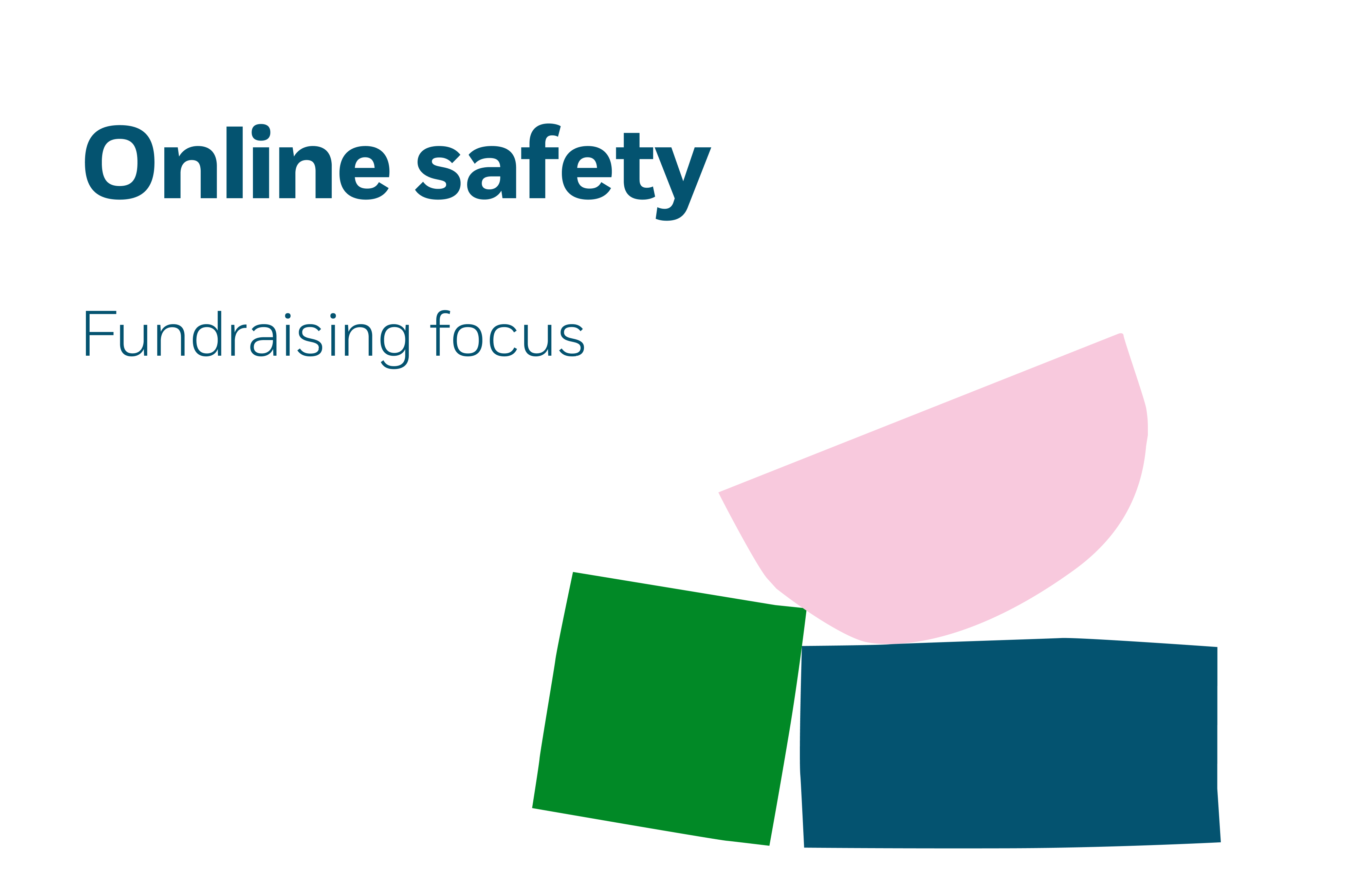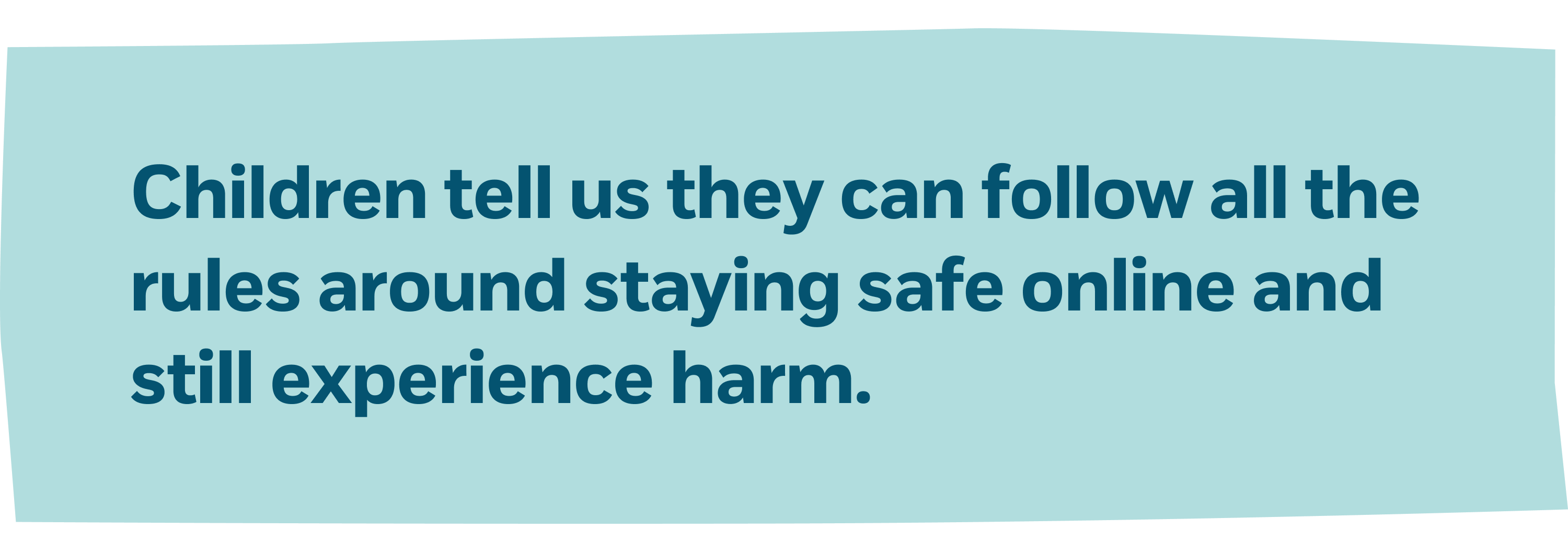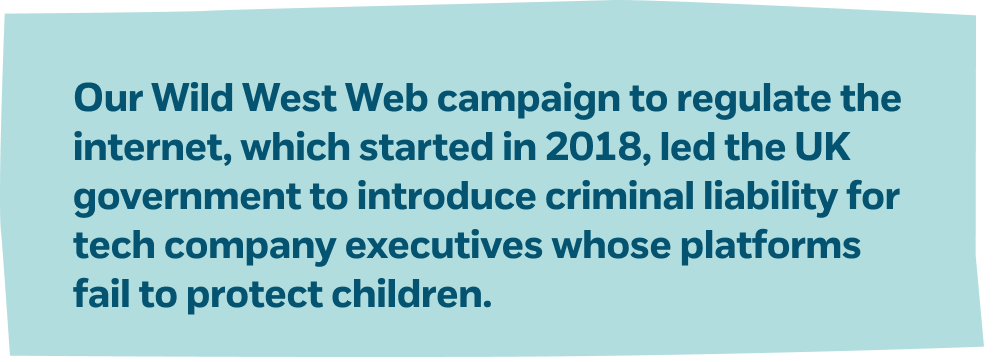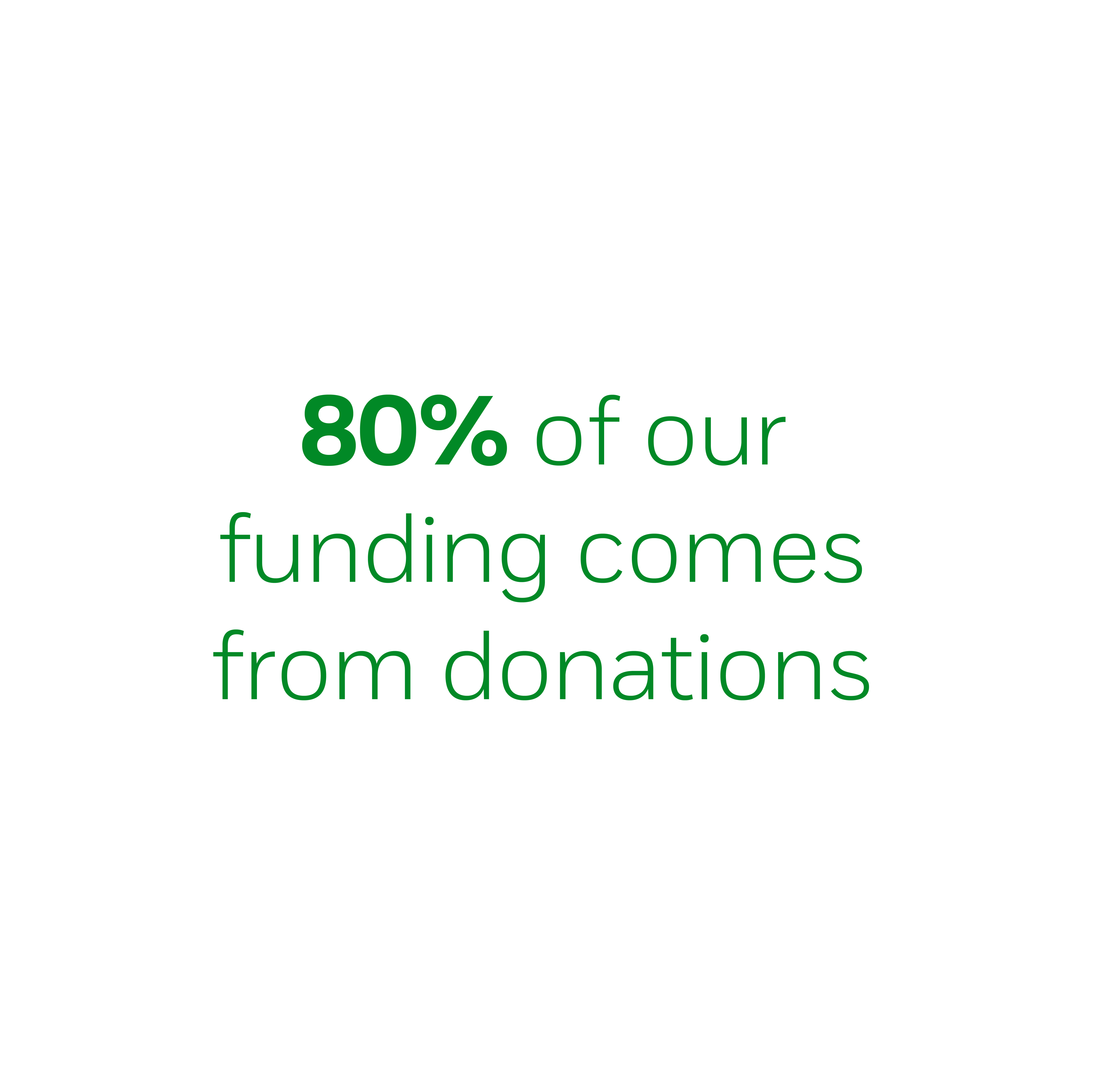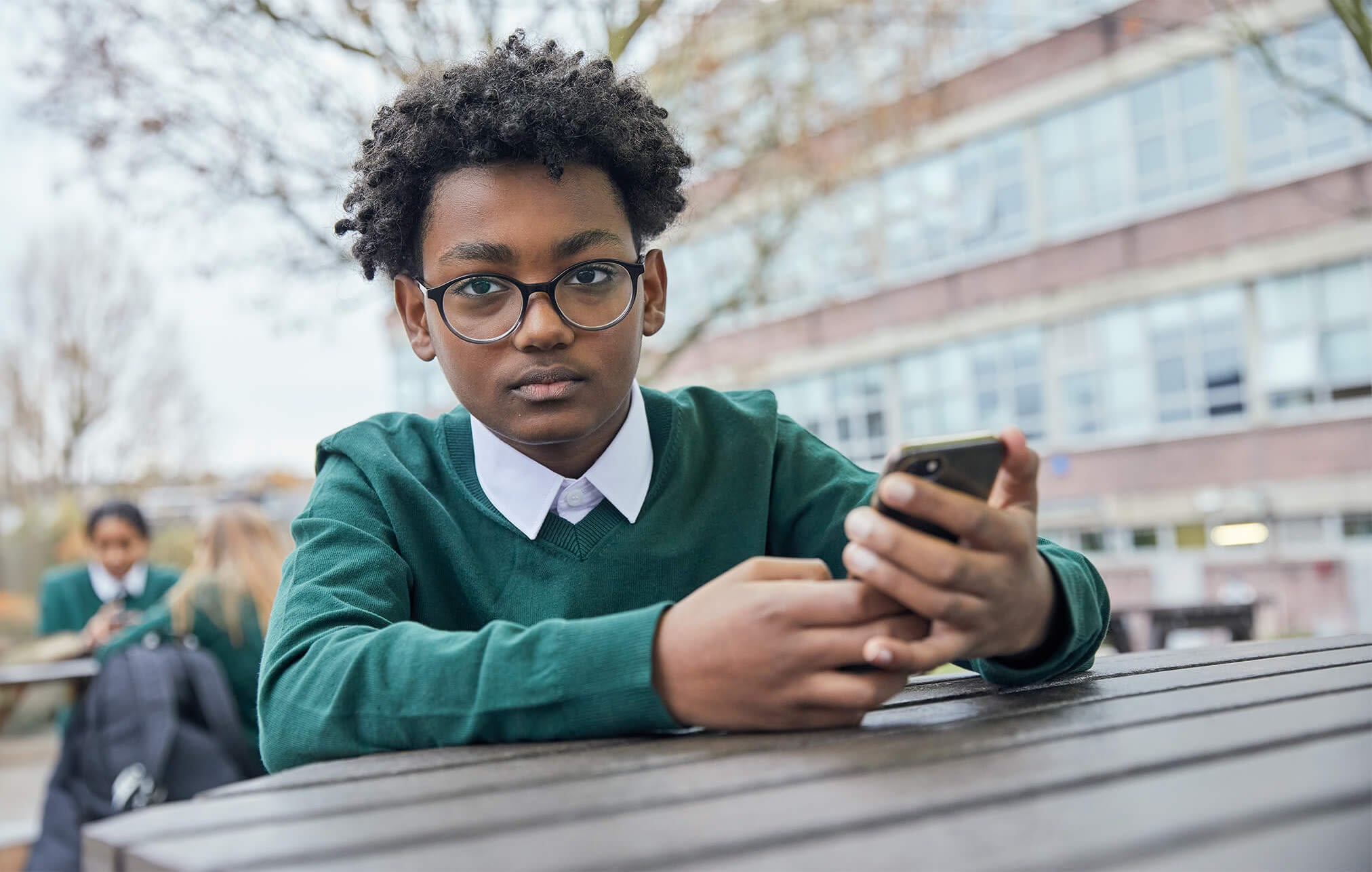
Online safety
Young people are among the most vulnerable users of the internet.
We believe far more can and should be done to protect them. With your support, we can make the internet a safe place for all children.
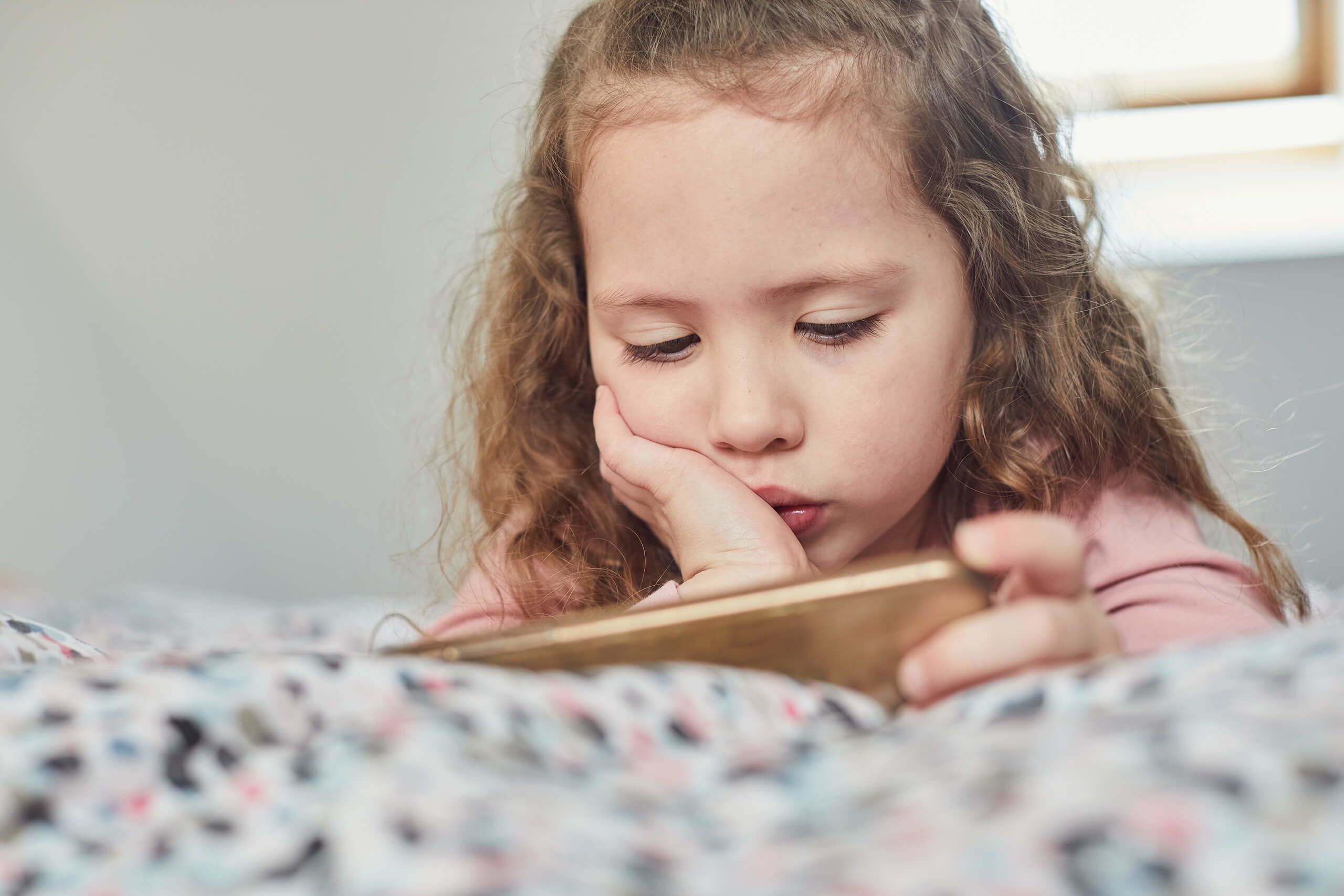
A rapidly changing
new challenge
Safety is fundamental when raising children. From baby-proofing cupboards to looking both ways when crossing the road, and from stranger danger to deciding when teenagers are ready to go out alone.
We have over 100 years of experience in listening to and supporting children – but the sheer scale of technology and online platforms, and their rapid pace of change, make this an entirely new challenge.
Online safety requires innovative solutions, energetic collaboration and leadership. Plus, an unyielding commitment to the voices of children from parents and carers, child protection professionals and everyone working in the technology industries.
The dangers children face online
Almost all of our young people are online – one in five internet users in the UK are children. Most children under 13 now have a profile on at least one social media platform, where they may be found by adults seeking out children.
Not enough is being done to keep children from harm and their voices are not being heard.
But society’s recognition of the risks and appetite for change has been steadily rising.
After 14–year-old Molly Russell took her own life in 2017, the coroner found that she had been exposed to harmful social media content that shouldn’t have been available for a child to see. The ruling sent shockwaves through Silicon Valley as Meta and Pinterest were held accountable for failing to protect her.
We must take action for children like Louise*, who was abused online between the ages of 11 and 17. She said:
“My older abuser was able to gain access to me from the comfort of his own home in another country. He robbed me of my teenage years and the memories I was meant to have. I became so beaten down and traumatised that I attempted suicide on two separate occasions.”
*Names and identifying features changed to protect identities.


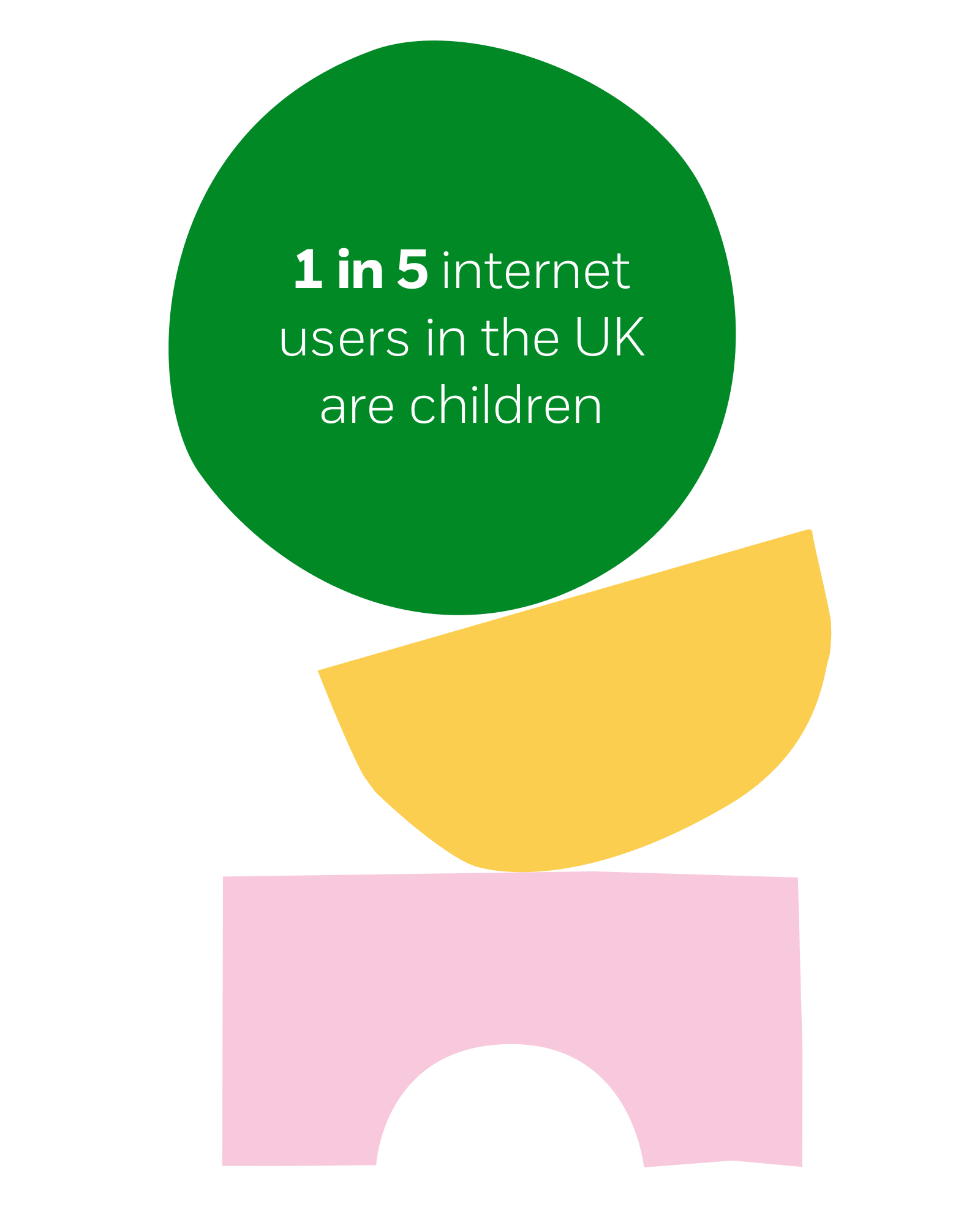
A rapidly changing
new challenge
Safety is fundamental when raising children. From baby-proofing cupboards to looking both ways when crossing the road, and from stranger danger to deciding when teenagers are ready to go out alone.
We have over 100 years of experience in listening to and supporting children – but the sheer scale of technology and online platforms, and their rapid pace of change, make this an entirely new challenge.
Online safety requires innovative solutions, energetic collaboration and leadership. Plus, an unyielding commitment to the voices of children from parents and carers, child protection professionals and everyone working in the technology industries.
The dangers children face online
Almost all of our young people are online – one in five internet users in the UK are children. Most children under 13 now have a profile on at least one social media platform, where they may be found by adults seeking out children.
Not enough is being done to keep children from harm and their voices are not being heard.
But society’s recognition of the risks and appetite for change has been steadily rising.
After 14–year-old Molly Russell took her own life in 2017, the coroner found that she had been exposed to harmful social media content that shouldn’t have been available for a child to see. The ruling sent shockwaves through Silicon Valley as Meta and Pinterest were held accountable for failing to protect her.
We must take action for children like Louise*, who was abused online between the ages of 11 and 17. She said:
“My older abuser was able to gain access to me from the comfort of his own home in another country. He robbed me of my teenage years and the memories I was meant to have. I became so beaten down and traumatised that I attempted suicide on two separate occasions.”
*Names and identifying features changed to protect identities.
Online risks in numbers
Over 275,000 webpages
containing child sexual abuse images were confirmed by the Internet Watch Foundation in 2023.
Almost 3 in 10 children
aged 8-17 have experienced someone being nasty or hurtful to them online.
80% rise
in grooming offences since 2017.
1 in 14 young people
have shared a naked or semi-naked picture of themselves.

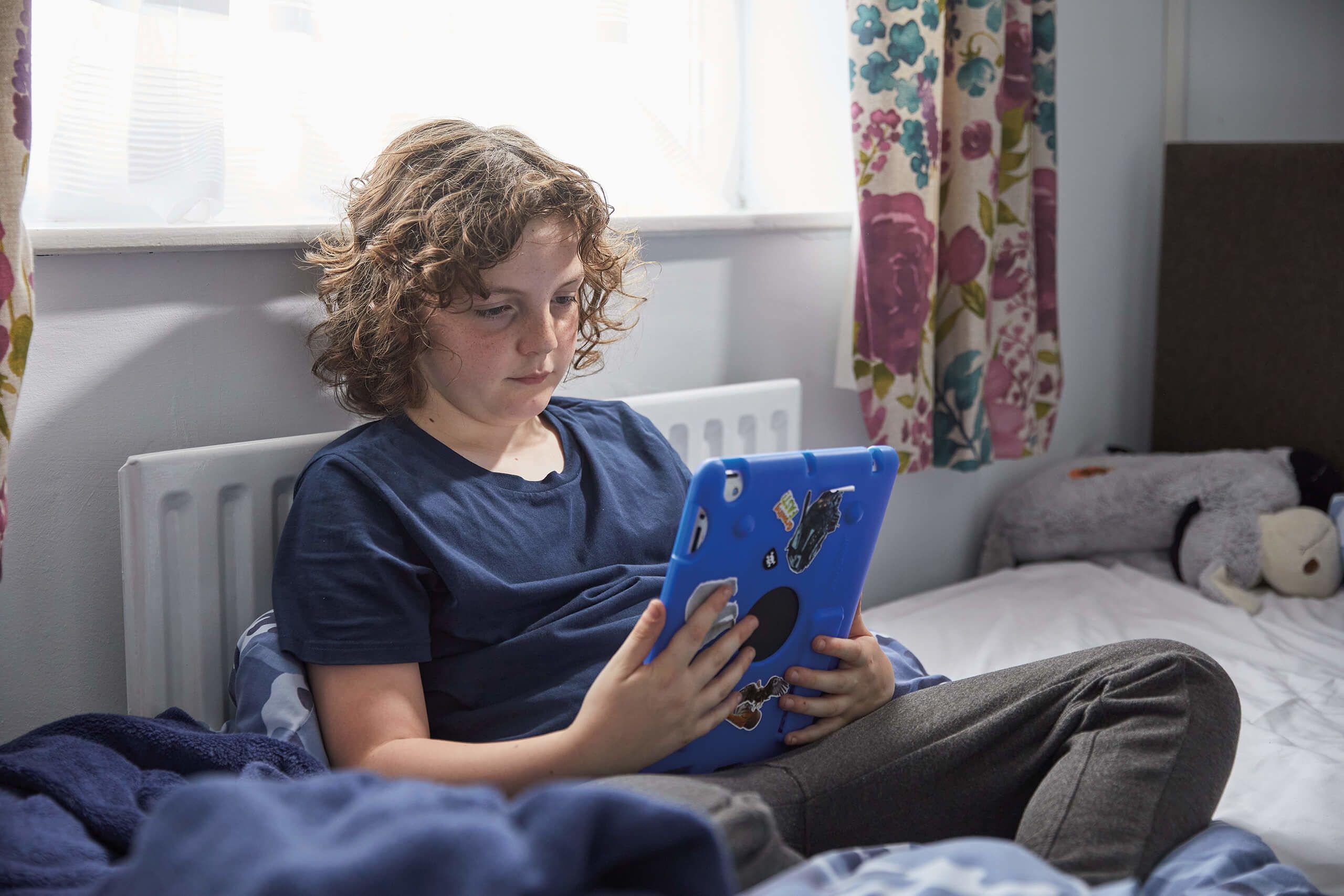
What children are saying
We have been engaging with children to understand how they use the internet and hear their priorities for staying safe online.
Young people tell us that being online is a fundamental part of their lives. For them, there is no distinction between the offline and online worlds and being connected is no longer a choice – those who don’t participate will be socially isolated.
They say that adults see keeping safe online as black and white, but the reality is more complex. It can be difficult to decipher harmful and unharmful content, peers influence their decisions and it’s all too easy for people to mask their identity behind a screen.
Children tell us they can follow all the rules around staying safe online and still experience harm.
Fundamentally, children say they want to be recognised as experts in their lives and involved in decisions about their safety.
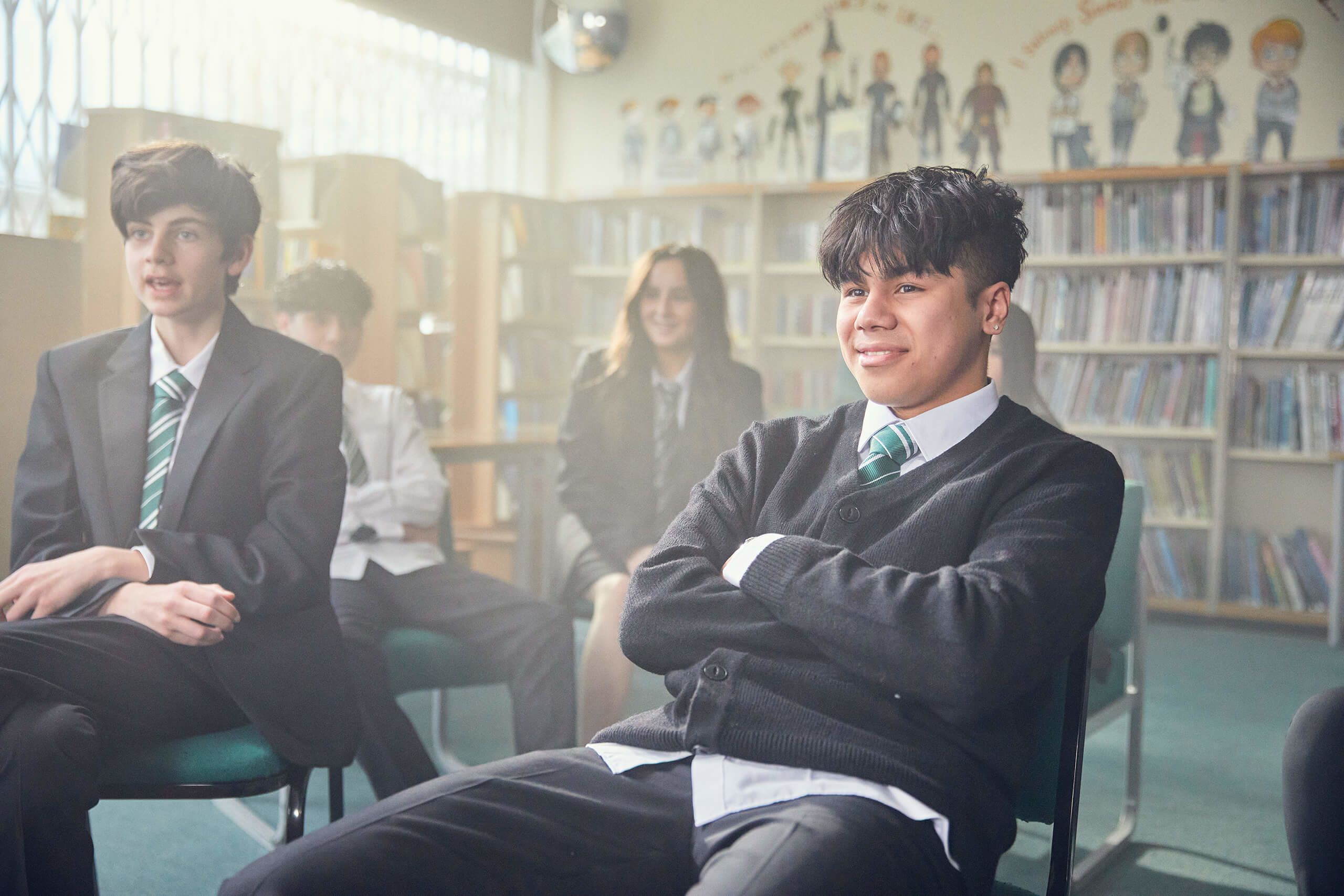
Creating a safe online environment
As the UK’s leading children’s charity, the NSPCC is ideally placed to keep children safe online. We shaped the Online Safety Bill and are working towards a safer online world for children through five key aims to be delivered by 2031. These goals have been co-created with children and young people to amplify their voices rather than speak for them.
- Children understand online risks, have healthy habits and know how to take action.
- Children who experience online harm and abuse receive effective support.
- Regulation keeps children safe online, focusing on children’s rights and giving them a voice.
- An online world safer by design, based on evidence so online providers put children first.
- Adults have the knowledge, confidence and tools they need to keep children safe online.
To achieve our aims, we will:
- Listen to children and young people.
- Process, track and analyse what we hear.
- Amplify their voices.
- Plan by proactively identifying partnerships.
- Act to develop effective solutions and influence online safety policy.
*In England and Wales

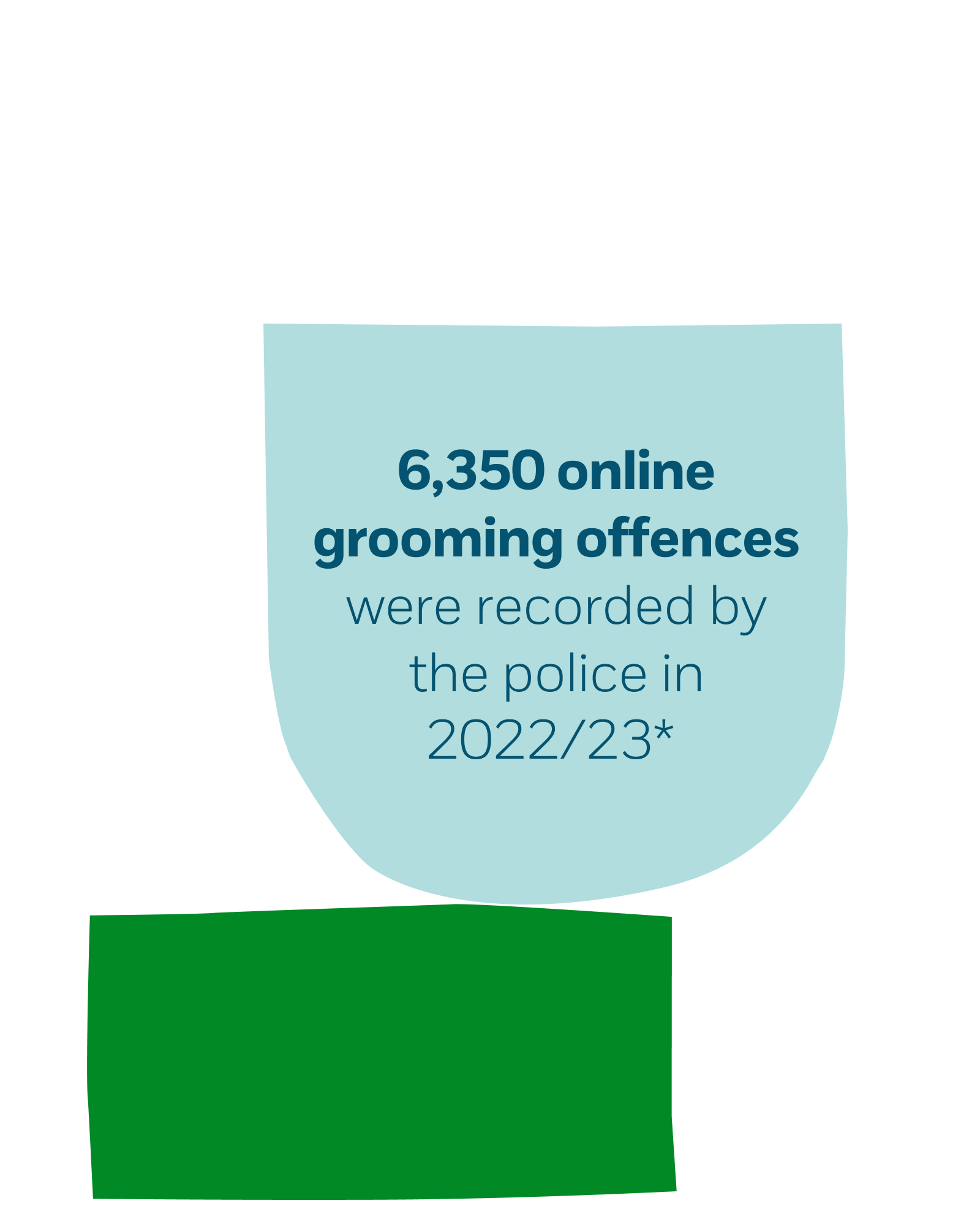
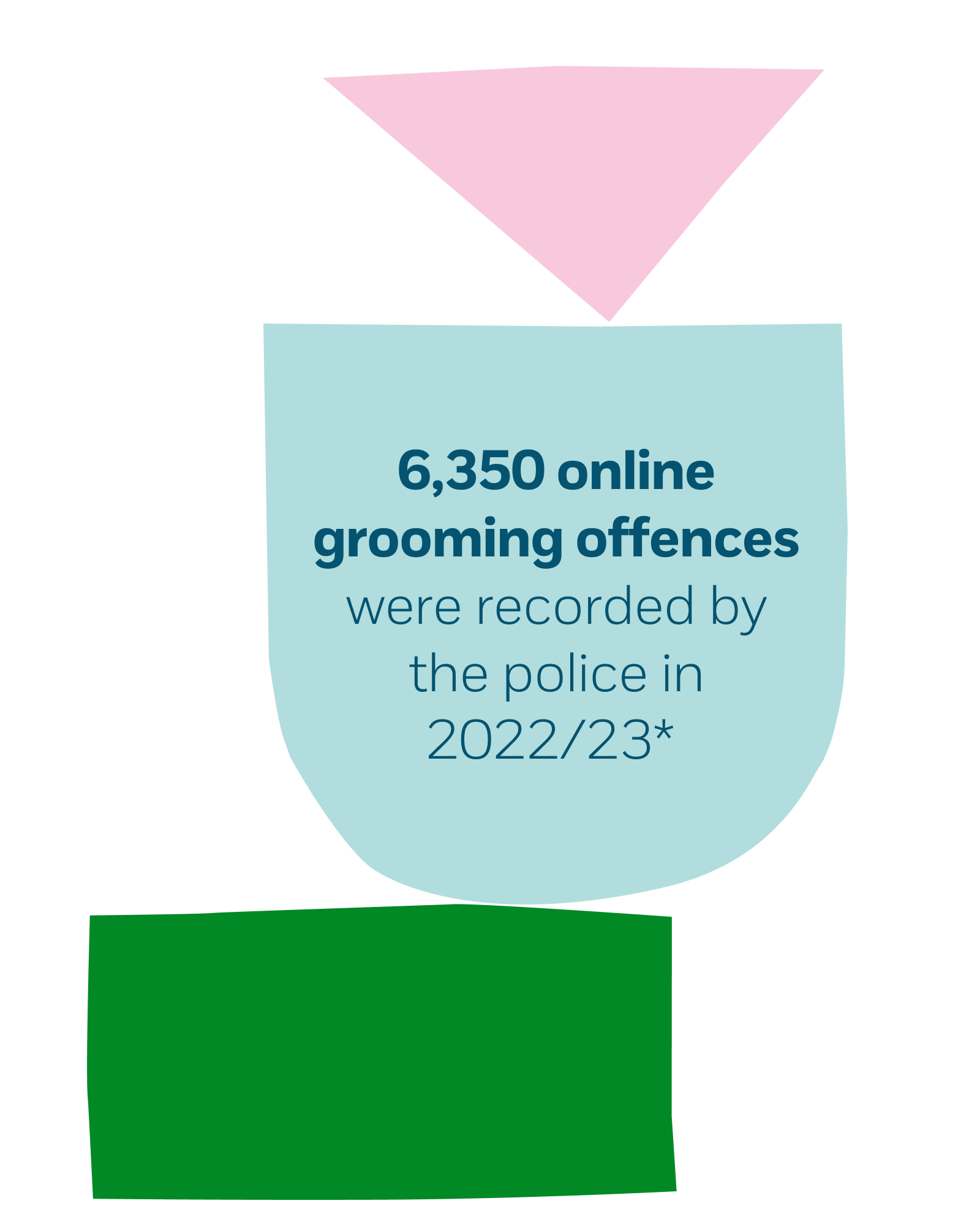
Creating a safe online environment
As the UK’s leading children’s charity, the NSPCC is ideally placed to keep children safe online. We shaped the Online Safety Bill and are working towards a safer online world for children through five key aims to be delivered by 2031. These goals have been co-created with children and young people to amplify their voices rather than speak for them.
- Children understand online risks, have healthy habits and know how to take action.
- Children who experience online harm and abuse receive effective support.
- Regulation keeps children safe online, focusing on children’s rights and giving them a voice.
- An online world safer by design, based on evidence so online providers put children first.
- Adults have the knowledge, confidence and tools they need to keep children safe online.
To achieve our aims, we will:
- Listen to children and young people.
- Process, track and analyse what we hear.
- Amplify their voices.
- Plan by proactively identifying partnerships.
- Act to develop effective solutions and influence online safety policy.
*In England and Wales
What comes next
The delivery of the NSPCC’s ambitious future projects, which are informed by our strategy for child safety online, will rely on the generosity of philanthropic partnerships.
Our central goal is to elevate children’s voices and experiences to identify, inform and influence effective solutions to online harm and abuse.
To achieve this:
- The ‘Voice of Online Youth’ - a group of 15 young people from across the UK, aged 13–16 - are sharing their views and ideas on issues that affect young people. We'll support them to develop and produce their ideas, and amplify young people’s voices through showcases and reports.
- We want to develop Childline Online into a ‘destination’ where young people can have a voice on online safety and adults can gain valuable insight.
- We are also seeking support to begin research with young people so we can find out their most pressing needs for support.
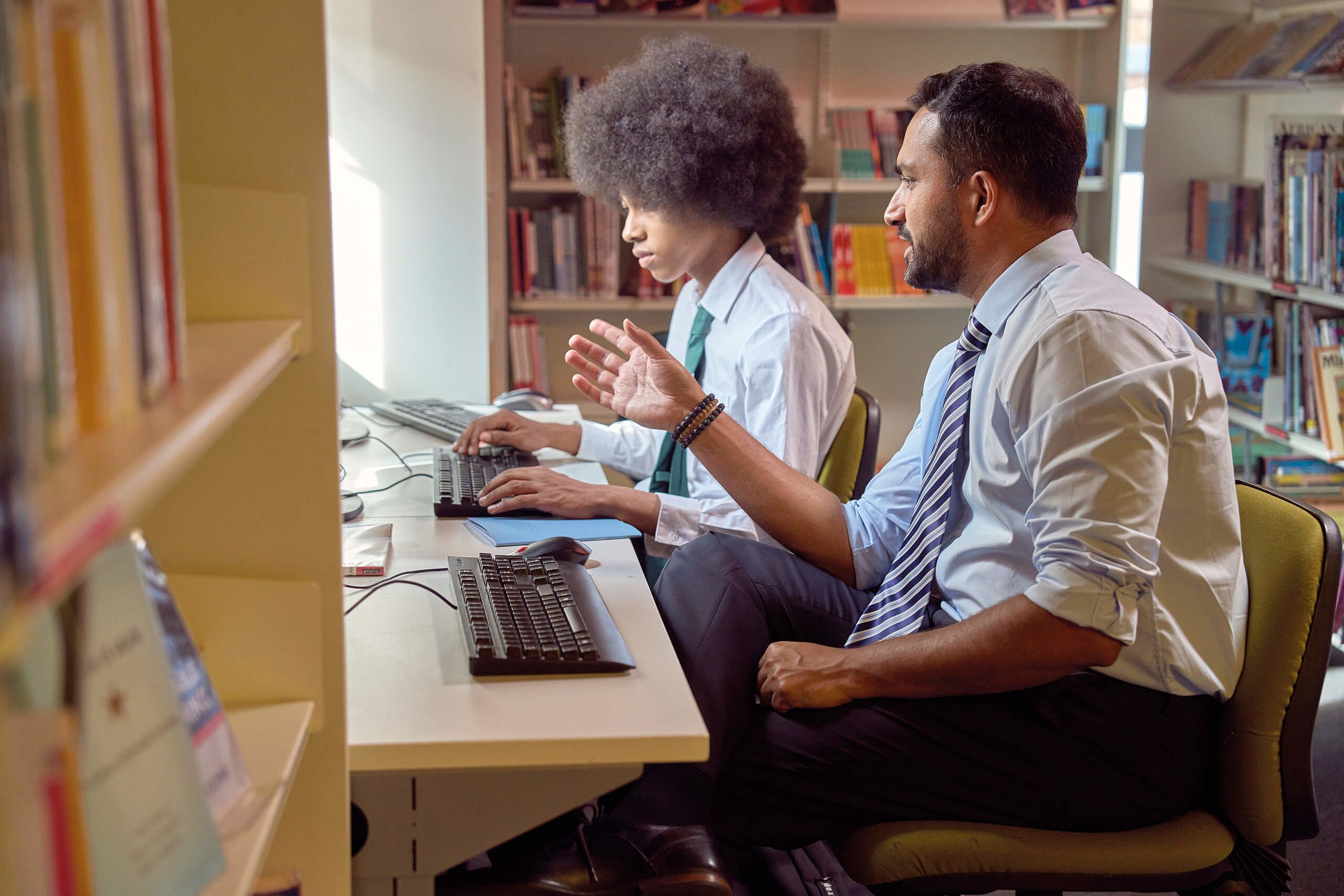
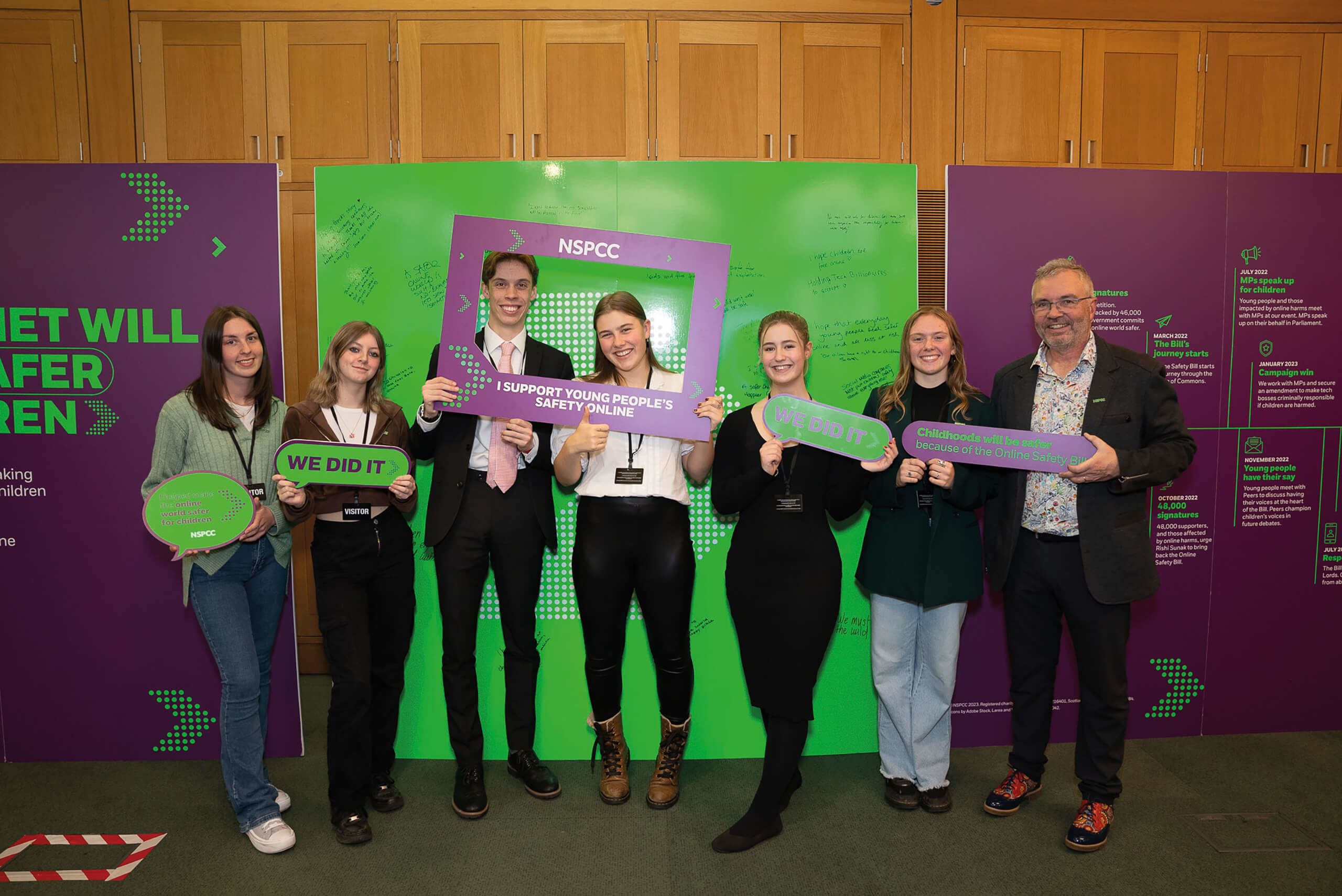
Changing the law to keep pace with technology
When the Online Safety Act 2023 became UK law, it marked a significant victory for the NSPCC’s campaigning work to keep children safe online.
We fought to get children’s voices heard, involving our Young People’s Board for Change and those personally affected by online abuse. We ensured that ministers, MPs and members of the House of Lords heard children’s experiences and what they thought needed to change, so that the new law would be effective and fit for purpose.
We believe amplifying children’s voices was key to delivering an effective Online Safety Act. One member of our Young People’s Board for Change said, “The people in charge haven’t grown up with the internet, so they wouldn’t know the reality of what it’s like to navigate it as a young person.”
With the new law now on the statute books, we continue to work to influence the regulatory framework and ensure it’s applied in children's best interests.
The Online Safety Act will create a significant shift change, but it won’t address the whole problem. That’s why support for our wider online safety work is so vital.

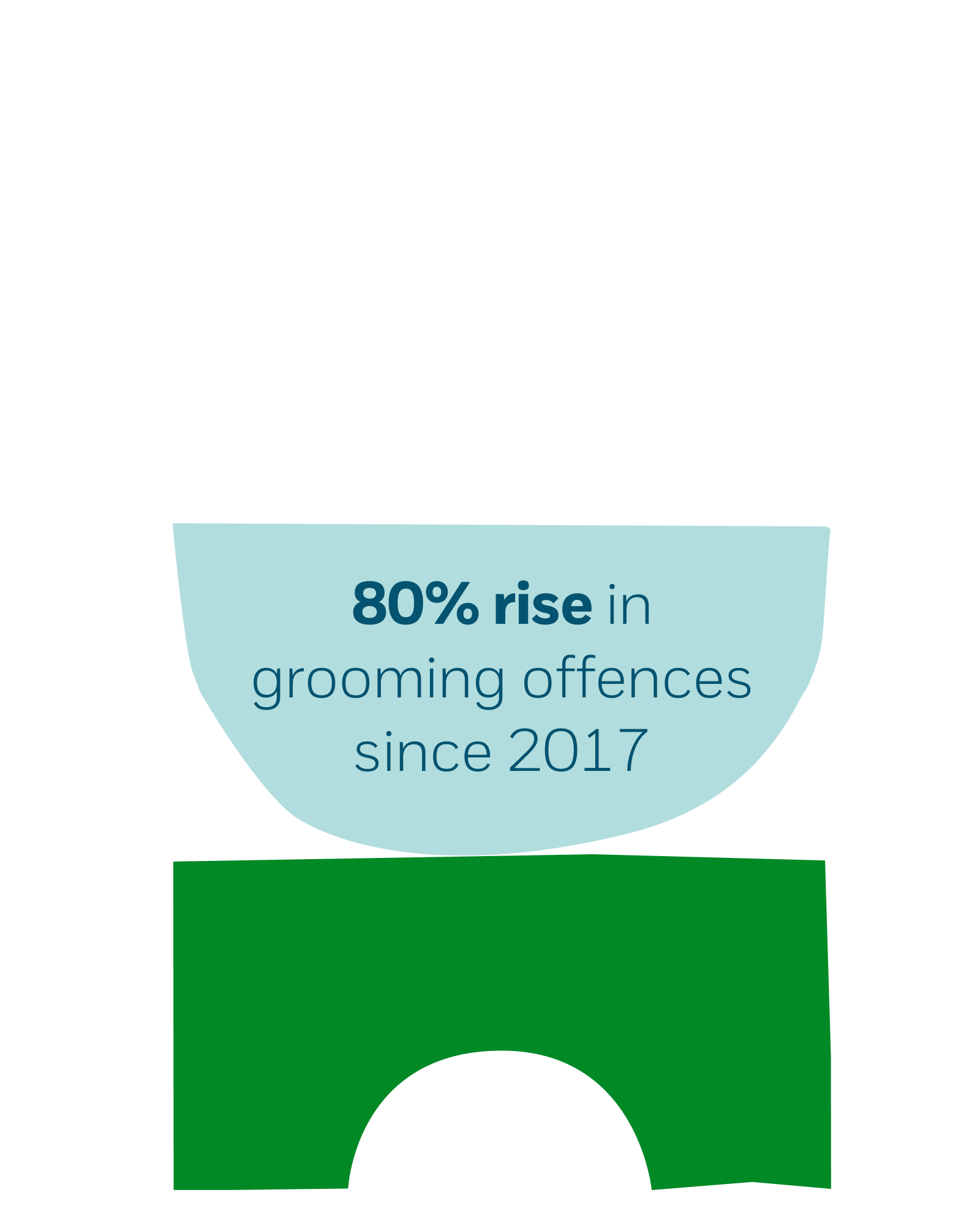
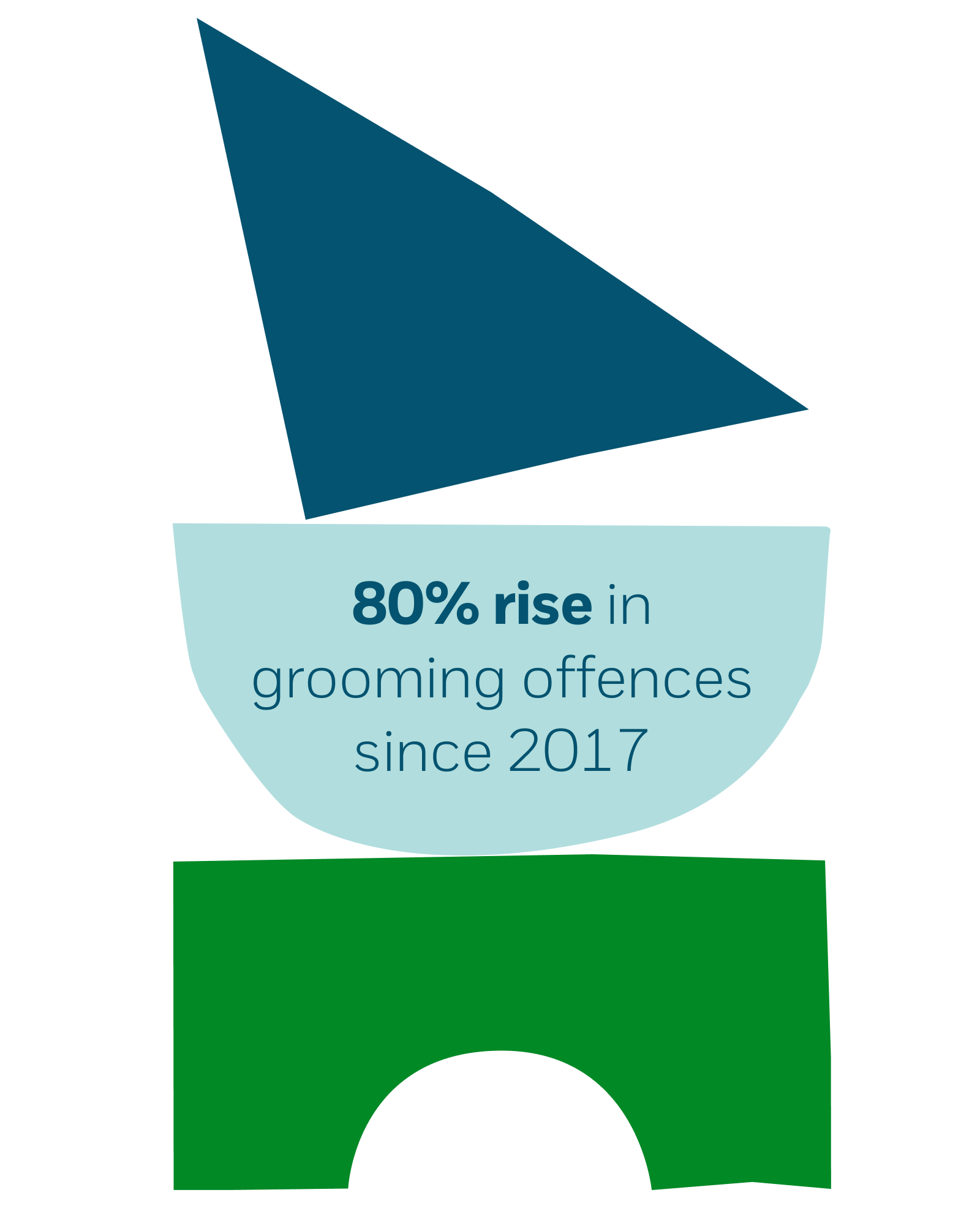
Changing the law to keep pace with technology
When the Online Safety Act 2023 became UK law, it marked a significant victory for the NSPCC’s campaigning work to keep children safe online.
We fought to get children’s voices heard, involving our Young People’s Board for Change and those personally affected by online abuse. We ensured that ministers, MPs and members of the House of Lords heard children’s experiences and what they thought needed to change, so that the new law would be effective and fit for purpose.
We believe amplifying children’s voices was key to delivering an effective Online Safety Act. One member of our Young People’s Board for Change said, “The people in charge haven’t grown up with the internet, so they wouldn’t know the reality of what it’s like to navigate it as a young person.”
With the new law now on the statute books, we continue to work to influence the regulatory framework and ensure it’s applied in children's best interests.
The Online Safety Act will create a significant shift change, but it won’t address the whole problem. That’s why support for our wider online safety work is so vital.
Our wider work
While our children’s online safety strategy is focused on preventing harm, the NSPCC also has a proven track record of creating tailored and effective solutions and campaigns.
Report Remove
This groundbreaking tool was developed jointly between the Internet Watch Foundation and the NSPCC. It allows anyone under 18 to report a sexual image of themselves to see if it’s possible to get it taken down from the internet.
We wanted to rid children of the extreme worry and distress about what to do when a sexual image of them is shared on the internet. Reporting an image only requires children to confirm their age and create a Childline account so they can receive updates.

Resources for families and professionals
By listening to and learning from children, we can better prioritise the action we take. For example, we know we can reach families more effectively by working alongside companies to create new campaigns, tools and resources. Just like during our partnership with O2, when we gave online safety webinars, produced booklets for parents, professionals and schools, and launched an online resource that was recommended by the UK government.
Together with Vodafone, we’ve created a resource to help parents learn about the safety settings on different social media platforms and popular online games. Our My First Phone campaign, meanwhile, helps parents feel more confident about online risks and safety settings when buying a child their first phone.
On the NSPCC Learning website, professionals can access a wealth of evidence-driven NSPCC resources and training around safeguarding and child protection. This includes courses developed in association with the child protection unit of the National Crime Agency, as well as advice on a wide range of topics around online safety.
Campaigns and advertising
We want to be there for children as soon as they need us, so we regularly run awareness campaigns about our online safety services. For example, our Parents vs Kids online safety quiz game was designed to create a shared learning experience between families to get them talking about online safety.
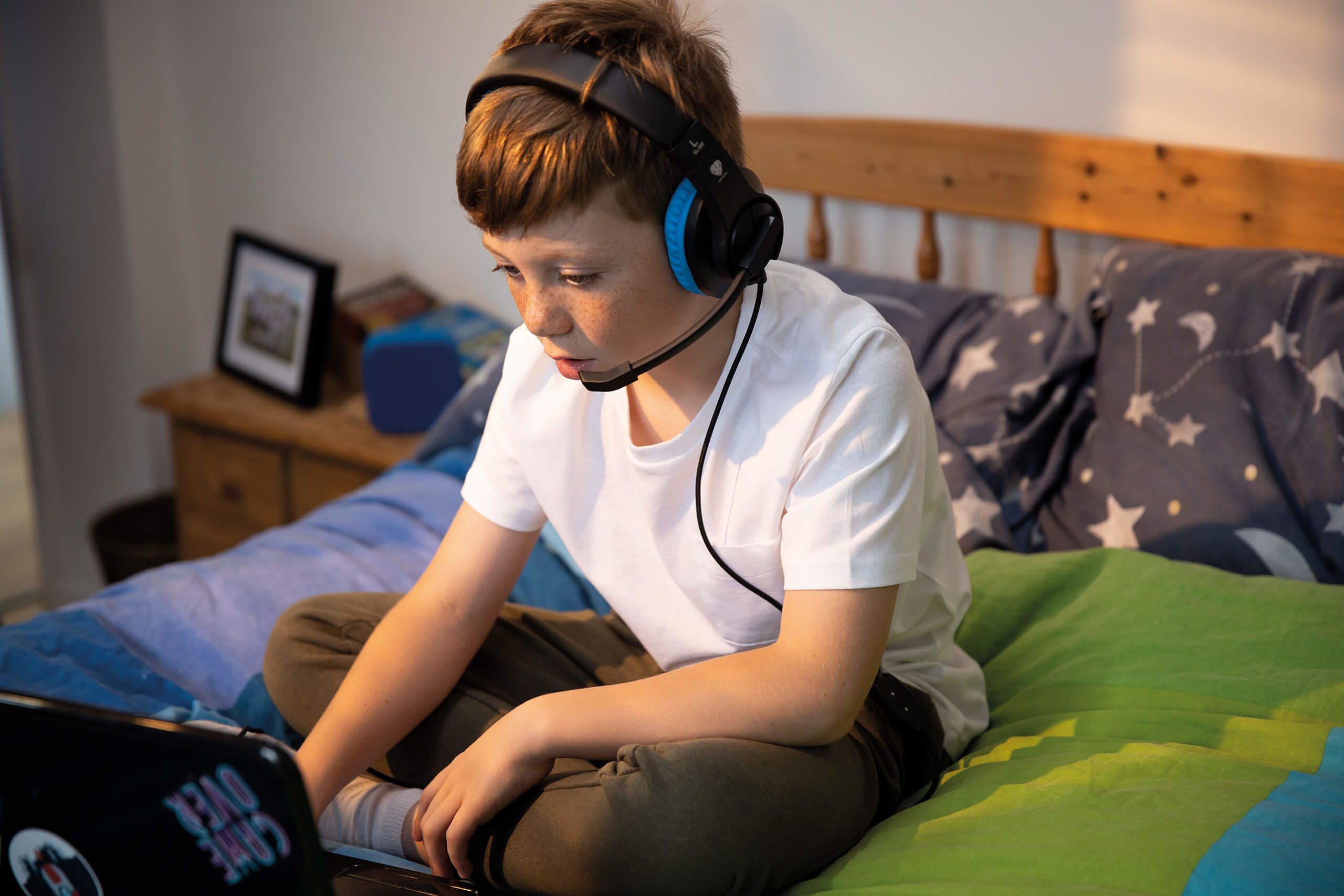
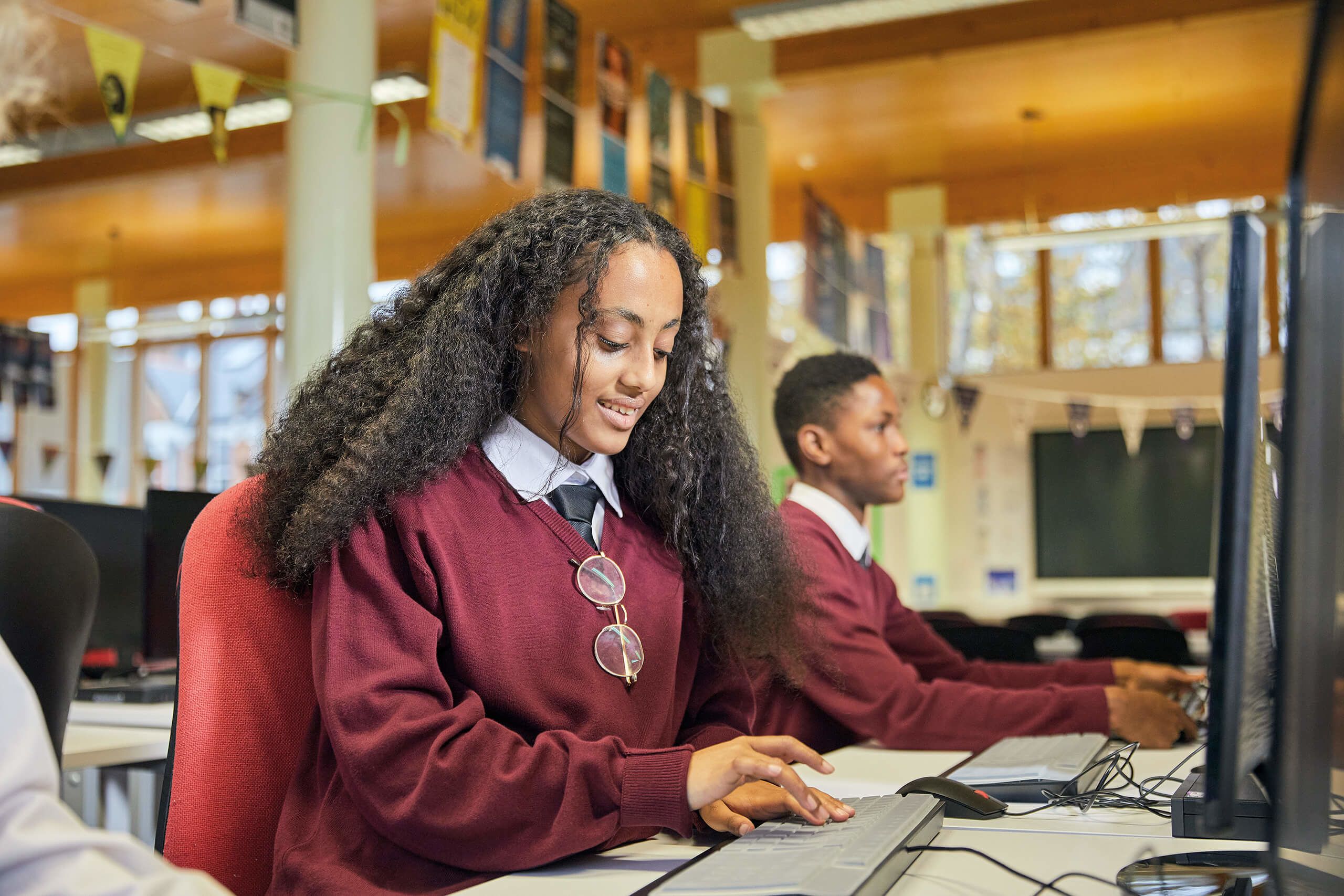
Will you help keep children safe online?
Our vision is for an online world safe for children within a decade.
This ambitious goal will only be possible with the support of people like you.
You can help place children at the centre of decision making and make sure there’s no place to hide for those wishing them harm.
